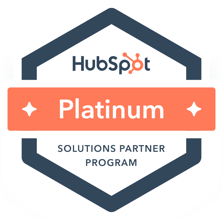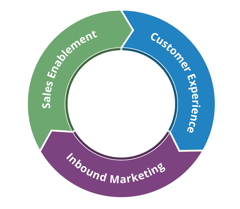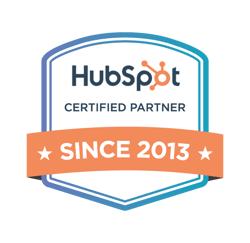 If you're like most marketers or business owners, improving lead conversions to customers is a top priority. You go through a lot to generate a lead between marketing campaigns, ad spend, creative, content development, and much more. While you know all leads won't be ready to buy, it's important to know what criteria is important to sales so you can work together on making sure the right traffic comes to your site and becomes a prospect in your pipeline. Remember, if your sales team spends the same amount of time pursuing low-quality leads as they do the high-quality ones, they are not using their time and resources efficiently. A better strategy is working to identify your best leads, then give sales the tools they need so they can provide those high-quality leads with the most attention. Here are just a few ways you can improve your lead to customer conversions.
If you're like most marketers or business owners, improving lead conversions to customers is a top priority. You go through a lot to generate a lead between marketing campaigns, ad spend, creative, content development, and much more. While you know all leads won't be ready to buy, it's important to know what criteria is important to sales so you can work together on making sure the right traffic comes to your site and becomes a prospect in your pipeline. Remember, if your sales team spends the same amount of time pursuing low-quality leads as they do the high-quality ones, they are not using their time and resources efficiently. A better strategy is working to identify your best leads, then give sales the tools they need so they can provide those high-quality leads with the most attention. Here are just a few ways you can improve your lead to customer conversions.
1. Set Higher Standards for Sales Qualified Leads
The first thing you’ll want to do is set higher standards for the leads you pass onto your sales department. Work with your sales team to identify what a Sales Qualified lead is to them. Ideally, you should only pass on leads that are very likely to convert, and you start to know this information by researching what pages potential customers convert on, what sources they come through, how many emails they open before they are ready to convert, and much. By doing this, you ensure that your sales department is spend less of their time on poor leads. Think about what percentage of your leads you are currently forwarding to sales, and then decide if you can trim this number down based on the criteria that is most important to sales. You’ll likely find that even though you are sending over fewer leads, you are increasing your total sales numbers because your sales department can devote more of their attention to high-quality leads. Your sales team will thank you!
2. Score Your Leads
To know which leads you should send over, you’ll want to implement some form of lead scoring. A study by Kentico found that 38% of businesses experienced higher conversion rates after implementing lead scoring. Lead scoring is when you take each lead you receive and put it through a qualification process. During this qualification process, a numerical value is assigned to each lead representing how strong it is. Some information you can use to score leads includes their demographics, how they interacted with your website, and their past purchases if you are in an e-commerce business.
To get started with lead scoring, you’ll want to examine your past leads. See which ones became customers, and then look for attributes that they have in common. Gather a list of attributes that describe your customers, then develop a weighted points system. For example, you may find that most of your customers were leads who came through your SEO strategy, while only some came through social media. With this information, you can give leads who arrive on your website from a search engine a score of 10 points, while those who came through social media receive 5. The more patterns you can find in your past customers, the better the scoring system you can develop. For more information on lead scoring, you can check out this guide from our friends at HubSpot.
3. Practice Lead Nurturing
Of course, the quality of a lead isn’t always binary, good or bad. A poor quality lead can become a strong one if you nurture it, just as a good lead can disappear if you ignore it. To nurture your leads to becoming more high-quality leads for sales, you should practice lead nurturing. Lead nurturing is when you attend to your lead’s needs at every stage of the buyer’s journey, guiding them along the path towards becoming a customer. Lead nurturing is so important that 74% of companies consider it their top priority.
For example, let’s say you sell social media marketing software. A lead comes to your website looking to learn more about what benefits a social media software can provide. They are not necessarily looking to buy yet, they are simply learning more. At this stage of the buyer’s journey, you could provide that lead with some helpful articles to help educate them, and then information about the benefits of your product or offer a free demo at the end of their lead nurturing cycle. This lead was of a poor quality originally because they were not interested in buying, but by nurturing them with helpful content and getting them to the potential point of completing a free demo, you have moved them further along the buyer’s journey and turned them into a high-quality lead. With lead nurturing, you don’t have to toss out every low-quality lead right away. You can spend some time nurturing them and try to turn them into a high-quality one. For more information, you can use this lead nurturing guide.
4. Verify Your Data
Verifying your data is an important step towards improving your lead conversions. By verifying your data, you can ensure that what looks like your best leads are in fact your best leads. You may have a database full of information about your customers, but if this information isn’t accurate, you’ll simply be wasting your time and effort. There are a number of verification services you can employ that will check over your data for you regularly and ensure everything is in order. They can update records, delete records that are no longer useful, and connect you with lapsed leads, freeing you up to focus on other matters. Tools like NeverBounce, Seamless AI, and Siftrock (recently acquired by Drift), are some good places to start. Find a data verification system that works for you so that you can be sure you’re focusing on the best leads.
5. Personalize Your Approach
90% of consumers are more likely to do business with a company if they offer a personalized experience, 60% of consumers think personalized suggestions are important and 62% concur that they are superior to general ones. Therefore, if you can personalize your online experience, you can improve your lead conversion rates. To do this, you have a few options. You could provide personalized product recommendations based on their buyer persona, lifecycle stage, pages viewed, and more. You can also personalize the time your email messages are delivered based on the actual day and time that they are most likely to engage. We partner with Seventh Sense for this type of highly personalized email deliverability, and you'll quickly see an increase in your email engagement rates. In addition, you can adjust your landing pages based on the referring source or providing a live chat service. By providing your high-quality leads with a more personalized experience, you nudge them a little closer to converting.
6. Define Your Follow-Up Strategy
Finally, it’s important that you have a strategy to follow up with leads. According to a study by Gartner, 70% of leads are lost due to poor follow up. Sometimes you’ll find a high-quality lead, but they aren’t ready to convert just yet. In situations like this, you’ll want to follow up with them at the right moment. If you wait too long, the lead may forget about why they were considering you or have gone with a competitor already. On the other hand, if you follow up too soon, you may make the lead feel pressured. Knowing when and where to follow up with a lead will take some practice. You should evaluate each lead individually and find an approach that works best for them. For example, it’s sometimes best to follow up with a phone call a few days after the initial conversation. In other cases, an automated email message the day after they subscribe to your newsletter will work best. Try out different follow-up approaches, measure the results, then make improvements as you learn more. If you're not using a CRM, connect with us and we can help you implement a free CRM in just 5 days so you can start track to your follow-ups with your sales team more closely.
Hopefully, this guide was able to provide you with some strategies for converting your best leads. Using the methods above you should be able to not only increase your lead to customer conversion rates, but also do so without spending more time and money so you can increase your marketing and sales efficiencies. Are you looking for some guidance on best practices based on your own organization's lead to customer conversion rates? Schedule a free consultation with our team and we can provide you with feedback and tips to help improve your customer conversion rates so you can focus on building your next campaign.


.png?width=80&height=80&name=diamond-badge-color%20(1).png)
__Square.png?width=250&height=250&name=Marketing_Hub_(1)__Square.png)




.png?width=250&name=diamond-badge-color%20(1).png)
